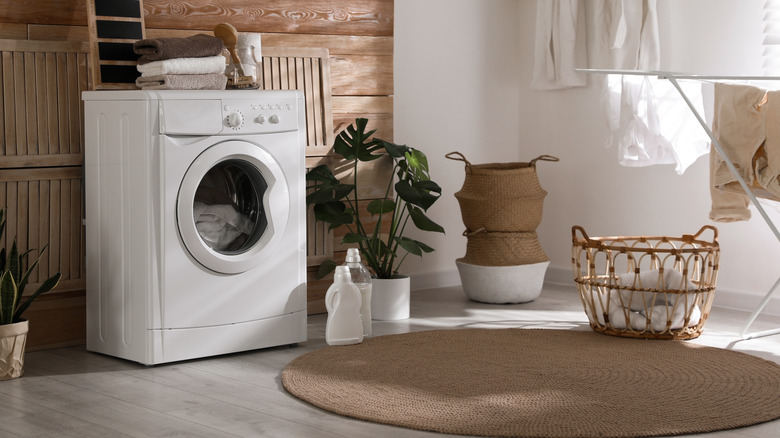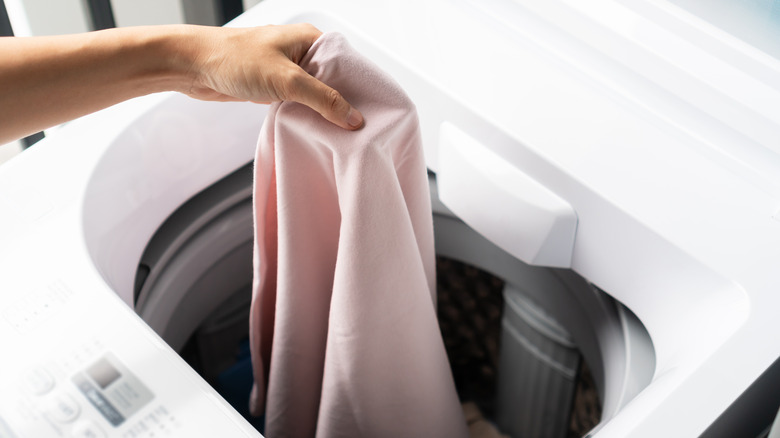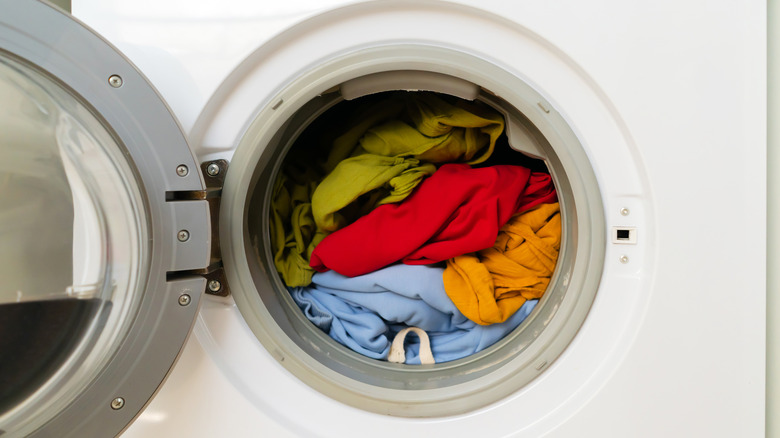Laundry Loading Tips Sure To Keep Your Washing Machine In Balance
When doing laundry, most of us don't think much beyond throwing our clothes into the washing machine, measuring out detergent and softener, and then waiting to get our clean clothes at the end of the cycle. And for the most part, that's all we really need to do. But as with everything that involves household appliances, there is an efficient way and wrong way of doing things, particularly since loading your machine improperly can lead to a host of problems. Whether that means retrieving still unclean (but now potentially germy) clothing, ruining your favorite pants, or even triggering vibrations that could damage your machine's moving parts, it pays to think before throwing your dirty clothes in.
How to properly load your washing machine depends on the specific model you use in your home. Even though there are two basic designs, either top-load or front-load, they often come with specific loading instructions and must be handled differently. For this reason, reading and following your unit's owner's manual is always important when buying a new washing machine.
How to place laundry in a top-loading washing machine
Many of the washing machines used in homes today are traditional, top-load units with agitators — the bulky pole at the heart of the appliance designed to move your clothes around. If this sounds like the model your home relies on, manufacturers recommend laying bulky items at the bottom before placing other items loosely and evenly around the agitator; mixing small and large items is allowed.
If your machine doesn't come with an agitator, it likely cleans clothes by using a plate located at the bottom of the drum known as an impeller. If this sounds like your model, it's best to load your clothes around the plate one at a time, beginning with the dirtiest clothes. Taking your basket and throwing everything into the drum in one go will likely leave you with a tangled mess of clothing at the end of the cycle.
Whether your washing machine uses an agitator or an impeller, Tide warns that overloading your machine will keep it from properly cleaning your clothes. One way to know when you've overloaded your machine is if you have less than six inches of room from the top of your pile to the top of the drum.
How to place laundry in a front-load washing machine
Although front-load washing machines tend to be more energy and resource efficient than top-load models, they need more time to go through a wash cycle and are likely to need more care. For this reason, loading laundry the correct way is imperative.
Ariel says the best way to use a front-load unit is to wait until you have a full load of laundry because anything less would be a waste of water and electricity. Having said that, you certainly don't want to overload your machine, so paying attention to both volume and weight is essential. You know you have the right amount of washing to do when you can put your hand in the drum and have the side of your thumb touch the top and the side of your pinky touch your laundry.
As with a top-load machine, you'll want to put your clothes in one at a time to keep them from getting all twisted together. It is also important not to pack your clothes down; this ensures they have room to move about and get clean.


